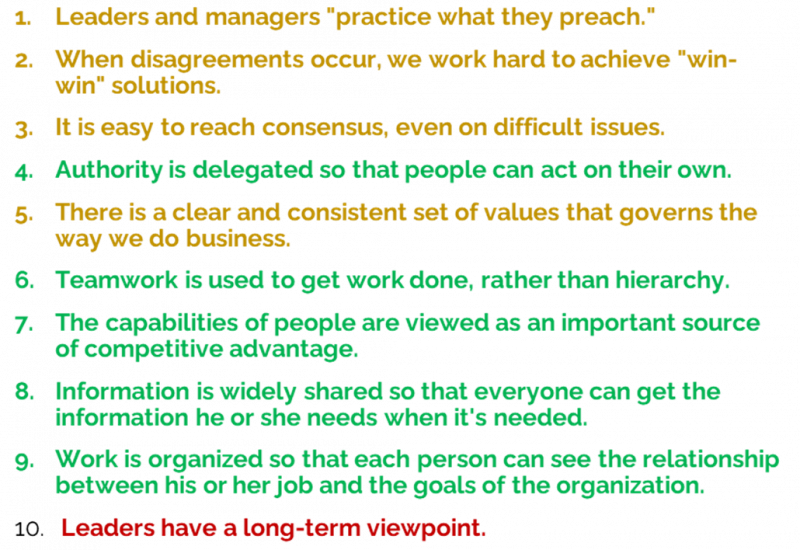The Horrendous Costs of Workplace Disputes
June 2023
David Boddy, Developer of ‘Creative Conversation Circles’, Senior Partner, ASIS Business Coach, London UK. Strategic Partner to Denison Consulting Europe.
Karen Jones, Managing Director of Consulting & Partnerships, Denison Consulting Europe.
The cost of workplace disputes across UK businesses is horrendous – both in terms of financial cost and loss of workplace well-being. An in-depth study by Professor Richard Saundry of Westminster University’s School of Organisations, Economy & Society places the financial cost of workplace disputes at £28.5 Billion per year. A study by the reputable Advisory, Conciliation & Arbitration Service (ACAS) puts it at £2 Billion higher. The Professor’s research shows that one in three employees has experienced workplace conflict. Nearly half a million employees resigned their posts because of such disputes and nearly one in ten had to take time off work because of the associated stress.
The financial burdens don’t end there. The costs of recruitment, induction training and lost productivity amounted to around £30,000 per employee. The cost of those who voted with their feet and picked up their P45s totalled £11.9bn and the cost of those who were dismissed (as a result, mostly, of disciplinary proceedings) totalled £10.5 billion. The problem with being presented with ‘big’ numbers is that they can so easily be glazed over without acknowledgement of their enormity – and without an understanding of the personal ‘cost’ to the participants on all sides and to the impact on energy and goodwill in the affected companies.
The one bright note arising from this otherwise depressing report is that more companies are beginning to see the value of early intervention and mediation of such disputes, well before they get to the formal ‘adjudication’ phase. Yet, according to leading law firm Menzies – who are specialist employment lawyers – still, only 5% of companies are using professionals to intervene early in attempts to get to a resolution before disciplinary action or formal grievance/complaints procedures. And this is despite data clearly showing that where such informal processes are used there is a 74% success rate.
In business, money always talks. Right now, with a chronic staff shortage across several sectors, the full costs of recruitment are rising fast. Those companies failing to take action to create a Culture of openness and well-being will find themselves paying up to £70,000 – in recruitment costs, training costs, and lost productivity – simply to replace a mid-level executive earning around £40,000 per year. To put it simply, it is going to cost a company nearly twice the salary of any departed executive to restore productivity and value contribution to the company. Programmes therefore to retain staff are a financial imperative – not just a nice-to-have addition to leadership development.
Most would declare, in theory at least, the importance of fostering a psychologically safe work environment, where individuals feel comfortable speaking up without fear of retribution. Amy Edmonson who has extensively studied workplace disputes, reminds us that conflicts are inevitable and can even be beneficial for learning, innovation, and reflecting a culture that encourages divergent perspectives. The key is to ensure they’re productive conflicts that are managed well by addressing the conflicts in a timely and constructive manner. Denison’s research has explored the connection between leadership, culture, and employee turnover. The research found a direct correlation between high-performing leaders and lower turnover (and the opposite for lower-performing leaders and cultures leading to higher employee turnover).

As Macey, et al 2020 point out there are more employee listening platforms, that provide client organisations with subscription access to survey technology and content that allows firms to create an “always on” listening platform to track the employee experience, especially as their people move through the key phrases of the talent cycle. These listening platforms have provided the HR community with a powerful tool for integrating data from multiple sources and creating an integrated HR tool for tracking and analysis. It is less clear, however, how well they support organisational change and transformation.
We would strongly suggest you at least pay attention to the top Ten Correlators for how Managers drive a healthy Culture. Our driver analysis determined the key drivers were… (colour displays connect to the Denison culture model).

There have been a number of counter-arguments used in discussions around this topic. ‘Staff turnover of around 10% annually is actually healthy – it brings in fresh ideas and energy’. ‘If someone is disruptive, not a team player and not showing much promise, why would we want to keep him/her?’ I would counter the counter-argument with some better questions:
- What guarantee do you have that your replacement executives are going to be better than the ones that are leaving? On average, 50% of new executive hires leave in the first 12 months of their employment, mostly because of a lack of Cultural rapport.
- A disruptive employee could be demonstrating unhealthy behaviours for countless reasons – personal, professional, financial, or social. The fact they are disruptive clearly shows they have energy, even if it is of a negative kind. Would it not be both financially and socially better to “go the extra mile”, devoting the time to unpick the cause of the disruption, before either directly showing the door or (far worse), creating an atmosphere where they can’t abide by staying?
Thank you for contributions from the Denison team: Raul Gomez, Margaret Gorman, and Jay Richards.




